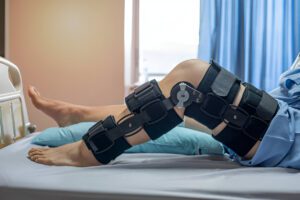Healing Journey After Meniscus Surgery What to Expect

Recovering from a meniscus tear can be a daunting prospect for athletes and physically active individuals. It’s an injury that not only impacts your mobility but also your lifestyle. Meniscus surgery is often the recommended path to restore normal function and get back to your beloved activities. This blog post aims to guide you through the recovery expectations after meniscus surgery, providing valuable insights for athletes, physical therapy patients, and those considering orthopedic surgery. We will explore everything from preparing for surgery to post-operative care, ensuring you have all the information needed for a smooth recovery.
Understanding Meniscus Injuries

The meniscus is a C-shaped cartilage in your knee that acts as a shock absorber. Its role is crucial in maintaining knee stability and mobility. Unfortunately, meniscus tears are common injuries, especially among athletes involved in high-impact sports. When a tear occurs, it can cause pain, swelling, and limited range of motion, often requiring surgical intervention to repair or remove the damaged tissue. Understanding the nature of your injury and the benefits of surgery can help you mentally prepare for your recovery process.
Preparing for Meniscus Surgery
Preparation is key to a successful surgery and recovery. First, gather as much information as possible about the procedure. Speak with your orthopedic surgeon to understand the surgical process, potential risks, and expected outcomes. Additionally, create a recovery plan that includes arranging help at home, preparing meals in advance, and organizing transportation for follow-up appointments. Knowing what to expect can ease anxiety and set the foundation for a more positive recovery experience.
The Surgery Day
On the day of your meniscus surgery, it’s important to arrive early and have a clear understanding of the procedure. Your medical team will explain the steps involved, which generally include anesthesia administration, the surgery itself, and post-operative care. Most meniscus surgeries are minimally invasive, performed arthroscopically, leading to quicker recovery times. After the procedure, you’ll be monitored in a recovery room until you’re ready to go home. Understanding these steps can help alleviate any apprehensions you might have.
Recovery Timeline
The recovery timeline after meniscus surgery typically involves several phases. Initially, you’ll experience swelling and discomfort, which can be managed with medications and ice therapy. The first phase focuses on pain management and gentle movement to prevent stiffness. As healing progresses, you’ll transition to more active rehabilitation, incorporating physical therapy exercises to strengthen your knee. Full recovery may take weeks to months, depending on the extent of the injury and surgery. Knowing these phases can help you set realistic expectations for your recovery.
Post-Operative Care
Effective post-operative care is crucial for a successful recovery. This involves a combination of physical therapy, pain management, and home exercises. Physical therapy plays a vital role in restoring knee function, improving range of motion, and building strength. Your therapist will guide you through a tailored exercise program designed to meet your recovery needs. Additionally, managing pain with prescribed medications and following safety guidelines at home will ensure a smoother healing process. Consistency in following your care plan is key to achieving optimal results.
Returning to Activity
For athletes and fitness enthusiasts, returning to activity is a major milestone in the recovery process. It’s important to follow your healthcare provider’s guidelines regarding when and how to resume physical activities. Rushing back too soon can risk re-injury and setback. Your therapist will gradually increase the intensity of your exercises, focusing on balance and agility. Remember, patience is crucial. Listen to your body, and celebrate small victories along the way to full recovery.
Success Stories
Hearing success stories from individuals who have undergone meniscus surgery can be incredibly motivating. Many patients return to their preferred activities, often stronger and more mindful of their body’s capabilities. Testimonials from athletes and active individuals can provide insights into the challenges and triumphs of recovery, offering encouragement and perspective. These stories remind us that with dedication and proper care, a positive outcome is possible.
Recovering from meniscus surgery is a journey that requires patience, commitment, and a positive mindset. By understanding the recovery timeline, engaging in effective post-operative care, and following professional guidelines, you can enhance your healing experience. Whether you’re an athlete eager to return to sports or someone seeking to regain everyday mobility, the path to recovery is achievable. Remember to consult with your healthcare provider for personalized advice and support throughout your recovery.
If you found this post helpful, share it with others who might benefit from these insights. And always seek professional medical advice to ensure the best care for your specific needs. Your healing journey is unique, and with the right approach, you can look forward to a healthier, more active future.

